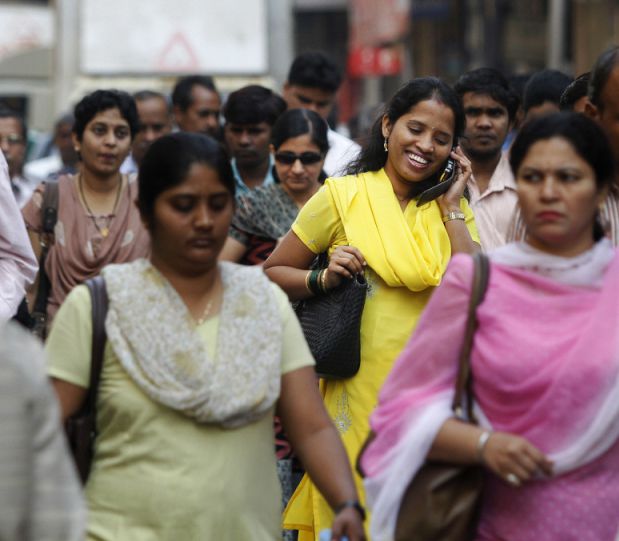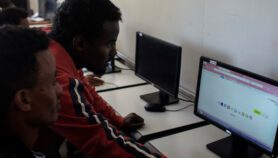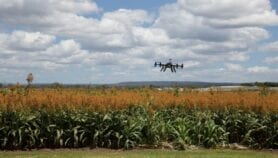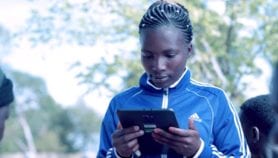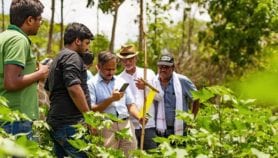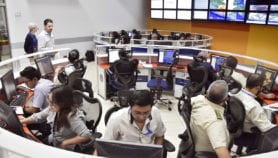Send to a friend
The details you provide on this page will not be used to send unsolicited email, and will not be sold to a 3rd party. See privacy policy.
South Asia has made rapid strides in information and communication technologies (ICTs) in recent years, but far more needs to be done to bridge the digital divide. Many of the region’s 1.7 billion people still struggle to access modern digital services. National level statistics often mask disparities — for example, between urban and rural areas, and between men and women.
These gaps are highlighted in two global reports that came out during the last few weeks. Both reports acknowledge that there are still substantial digital divides, both between and within countries, in the penetration rates of both fixed and mobile telephones, as well as of broadband internet.
On 30 November 2015, the International Telecommunications Union (ITU), a UN agency, launched the 2015 edition of the Measuring the Information Society Report. The annual update shows how developing countries are lagging behind developed countries in mass access to new ICTs. [1]
Mind the gaps
Especially disadvantaged are the least developed countries (LDCs) — those with a per capita gross national income of less than US$1,035 per year. That category includes four countries in South Asia: Afghanistan, Bangladesh, Bhutan and Nepal.
The ITU’s analysis, which focuses on the supply side of telecom services, shows mixed results.
On the plus side, 95 per cent of the world’s people now live in areas covered by mobile signals. The number of mobile subscriptions worldwide rose to an estimated 7.1 billion in 2015 — it has more than trebled from 2.2 billion in 2005.
That year, at the UN-convened World Summit on the Information Society (WSIS), countries adopted a common vision to build a “people-centred, inclusive and development-oriented Information Society”. A decade on, ITU says there is “still some way to go in achieving universal mobile access and usage in developing countries”.
By 2015, 40 per cent of the world’s population was accessing the internet, most of them through mobile devices. In South Asia, it remains less than half the global rate — 16.6 per cent in 2014 — according to World Bank data. [2]
In January 2016, the World Bank released the World Development Report 2016 (WDR 2016), which further probes digital dividends — the broader development benefits from using digital technologies.
The report collates evidence for the rapid spread of such technologies in most parts of the world, but notes how their adoption alone is not enough to transform societies and economies.
To get the most out of the digital revolution, countries also need to work on what the report calls “analogue complements” — such as strengthening regulations that ensure competition among businesses, adapting workers’ skills to the demands of the new economy and ensuring that institutions are accountable. [3]
In other words, the digital revolution needs a strong analogue foundation to derive full digital dividends.
The unconnected
Analysing national level official statistics, WDR 2016 shows how the digital divides persist across income, age, geography and gender.
There has been progress, but it is uneven. For example, 28 per cent of developing country residents say they can access the internet at home. In advanced economies, however, that rate is now 80 per cent.
The good news is that mobile phones have cut across most income and societal barriers: on average, 8 in 10 people in the developing world own a mobile phone. A mix of smartphones and low-end ‘feature phones’ today connect more than 60 per cent of people who did not have a landline phone in 2000.
The report does a cost comparison of mobile phone ownership and use. It finds that South Asia is home to six of the 10 cheapest countries to use a mobile phone (in ascending order: Sri Lanka, Bangladesh, Nepal, Bhutan, India and Pakistan). In all these, the cost of ownership is typically below US$5 a month.
In South Asia, this has been enabled by what researchers call the ‘budget telecom model’ where low-cost technologies coupled with business process innovations helped telecom operators reduce costs. Introducing pre-paid packages was a critical element: it allowed small and irregular payments, eliminating transaction costs for companies and simplifying ownership for new users.
Factors like geography and population density “appear to matter less than might be expected”, the report says, as mountainous Bhutan and Nepal are among the cheapest countries for mobile services.
WDR 2016 confirms that the spread of mobile phones is creating more interconnected societies. While all regions are converging in mobile phone use, “South Asia and Sub-Saharan Africa lag far behind in internet access”.
Broadband for all?
Can a budget telecom-like model help bring low-cost internet within reach of South Asia’s majority of unconnected people? LIRNEasia, an ICT policy research organisation in Colombo, Sri Lanka, has been studying this prospect for several years.
As Rohan Samarajiva, LIRNEasia’s chair, wrote in 2010: “Broadband can be brought to the people by extending and leveraging innovative business models, as has been shown with voice telephony among the poor in South Asia. The lower prices and widespread coverage that are central to the model are also desirable public policy objectives. The key steps in the coming period are the design and implementation of policies and regulatory measures that support and leverage the budget telecom network business model.” [4]
WDR 2016 recognises that making the internet universally accessible and affordable as an urgent priority. In recent years, it notes how technology costs have come down, but consumer access costs still vary greatly across countries. This is the result of “policy failures such as troubled privatisation, excessive taxation, and monopoly control of international gateways”.
Thus, more needs to be done in “analogue complements”. Increasing policy relevant research — including demand-side surveys — can provide very useful insights for such regulatory and institutional reforms.
More insights needed
There is currently an alarming lack of accurate and timely data on ICT use in the developing world, says Laurent Elder, programme leader on information and networks at Canada’s International Development Research Centre (IDRC), in a short contribution to WDR 2016.
“This makes it hard to understand the mechanisms by which greater information access among the poor drives economic opportunity,” he says. [3]
Elder has identified four key areas for future action. Firstly, at the national level, service licences should require operators to report data to regulators, and National Statistical Offices should include questions in their household surveys regarding ICT access and use, he says. Secondly, at the global level, we need to reignite global coordination bodies, such as the Partnership for Measuring ICT for Development, to compile, coordinate, and improve ICT data gathering. Thirdly, governments should explore using new data sources such as “big data,” crowdsourced data, and social media to complement ICT access and statistics on use. And fourthly, we need better mechanisms for telecommunications companies to share data — such as anonymised call records — for public research, policy, and planning purposes.
Bridging the digital divide is now a development imperative. Research-driven policies and sound regulation can
help connect more people, faster.
Nalaka Gunawardene is a Colombo-based science writer, blogger and development communication consultant. He tweets from @NalakaG
A version of this article was originally published on our South Asia edition.
References
[1] Measuring Information Society 2015 Report. International Telecommunications Union (ITU). November 2015.
[2] List of Least Developed Countries (LDCs). United Nations Office of the High Representative for Least Developed Countries, Landlocked Developing Countries and Small Island Developing States (UN-OHRLLS)
[3] Internet users by 100 people. World Bank database
[4] World Development Report 2016: Digital Dividends. The World Bank. January 2016.
[5] Cell phones empower South Asia’s poor. By Nalaka Gunawardene. SciDev.Net. 26 June 2014.
[6] Leveraging the Budget Telecom Network Business Model to Bring Broadband to the People. By Rohan Samarajiva. Information Technologies and International Development. Vol 6, Special Edition 2010.


